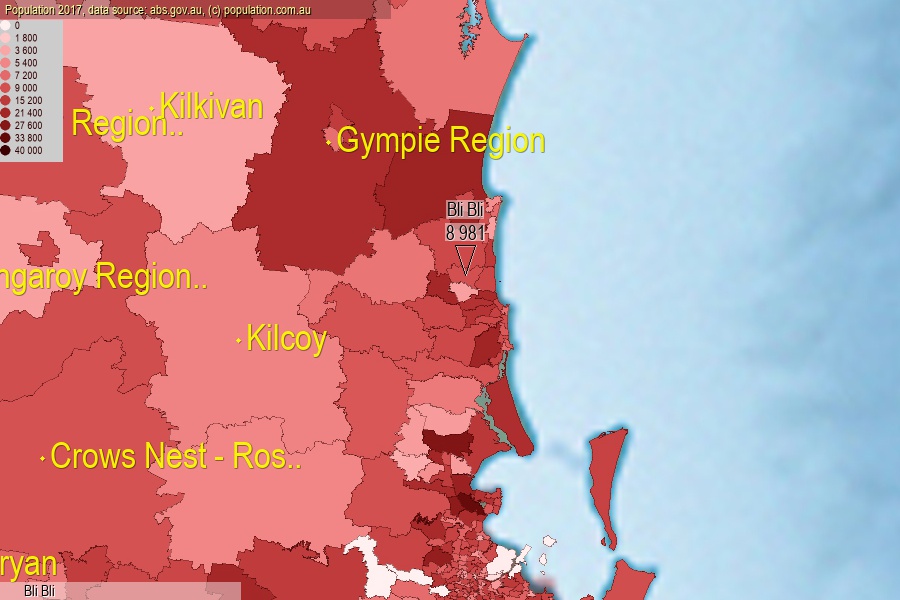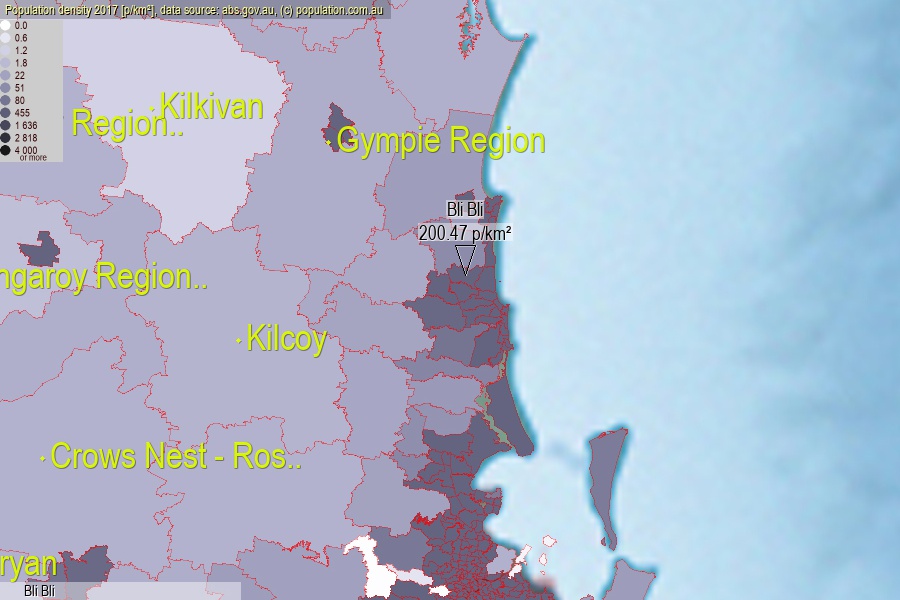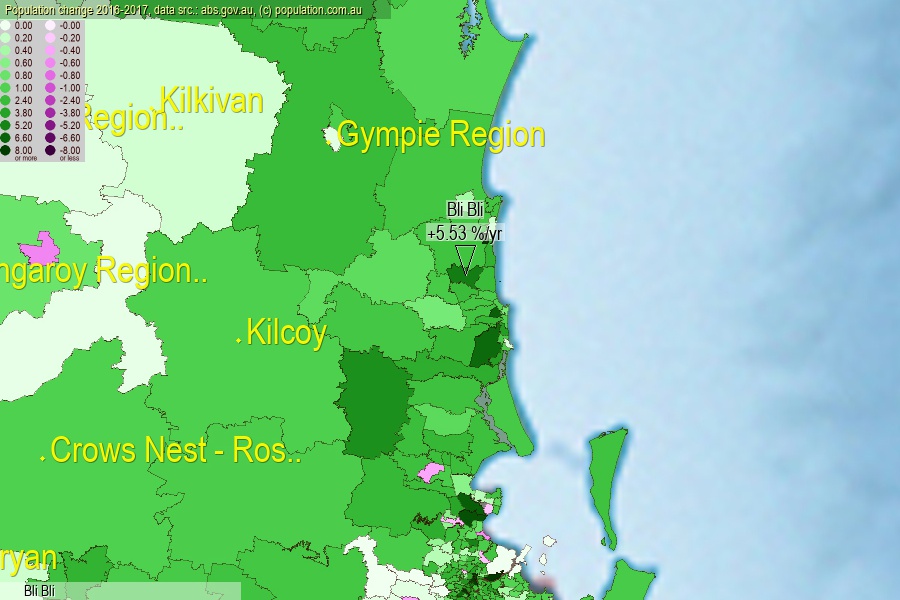 population.com.au
population.com.auLast official estimated population of Bli Bli (as Statistical Area Level 2) was 8 981 people (on 2017-06-30)[2]. This was 0.04% of total Australian population and 0.18% of QLD population. Area of Bli Bli is 44.80 km², in this year population density was 200.47 p/km² . If population growth rate would be same as in period 2016-2017 (+5.53%/yr), Bli Bli population in 2025 would be 13 819. [0]



Click to enlarge. Bli Bli is located in the center of the images.
Population [people], population density [p./km²] and population change [%/year] [2]
View borders » (new window) [4]
[2001-2002] +3.20 %/Yr.
[2002-2003] +3.37 %/Yr.
[2003-2004] +1.17 %/Yr.
[2004-2005] +1.09 %/Yr.
[2005-2006] +2.36 %/Yr.
[2006-2007] +2.24 %/Yr.
[2007-2008] +2.58 %/Yr.
[2008-2009] +2.43 %/Yr.
[2009-2010] +1.11 %/Yr.
[2010-2011] +0.86 %/Yr.
[2011-2012] +3.73 %/Yr.
[2012-2013] +4.90 %/Yr.
[2013-2014] +4.47 %/Yr.
[2014-2015] +4.47 %/Yr.
[2015-2016] +4.01 %/Yr.
[2016-2017] +5.53 %/Yr.
[0] Calculated with linear interpolation from officially estimated population
[1] Read more about SA2 and Australian Statistical Geography Standard (ASGS) on abs.gov.au
[2] Population data from Australian Bureau of Statistics (Population and density: 2017; change: 2016-2017)
[3] Digital Boundaries: Australian Statistical Geography Standard (ASGS) 2016.
[4] Border coordinates are simplifyed using Ramer-Douglas-Peucker algorithm.